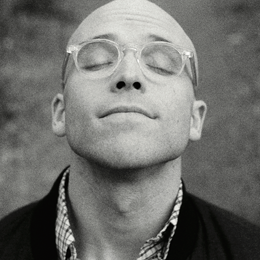
Designer and educator
Charlie works to blend knowledge gained from ArtCenter College of Design and a twenty year dance career into an approach to industrial design that prioritizes people, product, profit and planet. He believes there's room for life to get better, for every person, regardless of age, race, gender or income, without burdening our environment. During his travels through 100s of cities in more than 35 nations, across 4 continents, Charlie has developed proclivities for social empathy, curiosity, work-ethic, professionalism, commitment, kindness and creativity.
ArtCenter College of Design
IDSA West District Student Merit Award winner Charlie Hodges, IDSA, came to industrial design circuitously, having dedicated his life to studying the art of ballet at the age of 10. Traveling across 30 nations and five continents in pursuit of professional dance, Hodges performed extensively with Twyla Tharp, im’ij-re and the Sacramento Ballet, earning the Best Male Dancer at the European Critics’ Choice Awards (2003), Best Male Dancer on Broadway (2010), and L.A. Weekly’s Person of the Year (2014). Despite these acclaims, Hodges found he could no longer ignore the physical consequences of a professional dance career. “Ballet was the codex through which I learned about life. As rewarding as my career was, however, I paid for it in broken bones, torn ligaments and three hip replacements.”
Hodges transferred from Columbia University to the University of Washington to study architecture, which he saw as a logical next step from ballet. Far from hanging up his dancing shoes, Hodges chose to apply his skills to the medium of design, saying, “In order to connect with an audience, a performer must be honest and trustworthy. I believe the skills required…are the same as those required to empathize with the human condition to produce effective, impactful solutions to everyday objects and interactions.”
Graduating summa cum laude from the University of Washington and working for an architecture firm in New York, Hodges quickly grew discontented with the stifling bureaucracy of his field, a limitation that diverged from his own passions for dance and adaptive design. “My designs integrate transition and transformation. As life changes and dancers move between poses, I believe engaging objects do much the same.” Hodges realized that product design would give him the perfect medium to continue dancing, be connected with an audience and, in his own words, “highlight the sheer thrill of what it means to be alive.” With these objectives in mind, Hodges enrolled in ArtCenter College of Design, majoring in product design with a concentration in Designmatters in social innovation.
When reflecting upon how he came to win this year’s West District Student Merit Award, Hodges is quick to point to the positive influence of his instructors at ArtCenter. Beyond teaching him the fundamentals of product design (he points to manufacturing, generative research, design theory, sustainability and prototyping, among many others), his instructors taught him how to pursue his own agency through the medium of design. “My time at ArtCenter has put me in front of the most generous and patient teachers who daily guide my hand, mind and eye.”
Very different from what he calls the “shut up and dance” mentality of the professional ballet world, ArtCenter illustrates how essential communication and engagement are to the design process. In his own work, Hodges often produces several prototypes based on data implemented from mock-ups and interviews, a process that he says is reflected by his own history as a performer. “It is not unlike dance, rehearsing the same sequence over and over and over, learning more about the finest barely visible details and nuances.” This process, which Hodges identifies as a sort of “refinement process,” is a systemic one, not relegated solely to the arts. “It works for nature via evolution and biodiversity. Why shouldn’t it work for creativity as well?”
Hodges also recognizes the benefits of sustainable design and acknowledges the role designers play in providing consumers with inexpensive environmentally friendly products. “I believe that designers are at a point of greatest potential to make a powerful and positive impact on the lives of everyone, not just the wealthy, while protecting the planet on which future generations depend.” Hodges has produced a number of designs, both individually and in team settings, that attempt to capture this aesthetic and others, including Sandbox, a portable all-in-one system that scans, prints and recycles materials without the waste or expense of traditional 3D printers; Pirate Pachinko, a handheld pinball game that encourages impulse control and conflict resolution in kids; and k!neblocks, a 3D interactive building block system that teaches the alphabet kinesthetically.
Looking to the future, Hodges says that he hopes to benefit those communities that are often overlooked by other members of his field. “Through industrial design, I want to make the world a better place and draw attention to the brilliance of what it means to be alive.” In order to do this, Hodges says that he has to be willing to stand up for what he believes in, even when that stance is met with skepticism. “I have made it a point in my studies to lean into intimidation. The only plan worth having is to dive in headfirst and see what becomes of natural talent and a will to survive.”